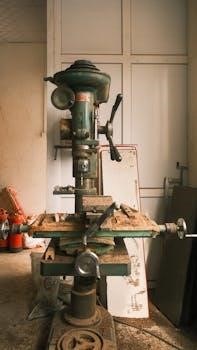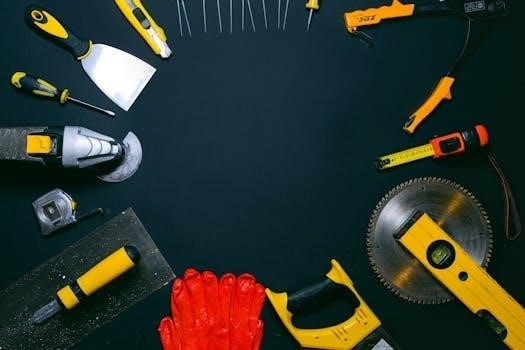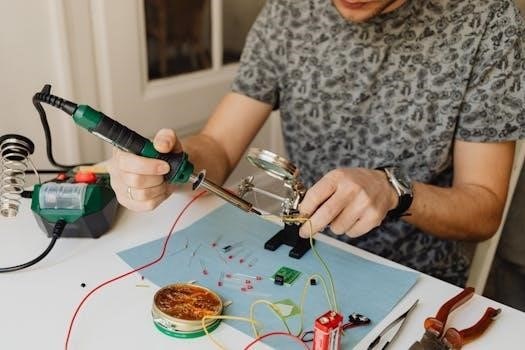
Manual vs. Power Recliners⁚ A Comprehensive Comparison
Choosing between manual and power recliners involves considering various factors. Manual recliners operate using body weight or levers‚ offering simplicity. Power recliners‚ on the other hand‚ utilize motors for effortless reclining with the push of a button. Ultimately‚ the ideal choice depends on individual preferences and needs.
Selecting the perfect recliner for your living space can be a daunting task‚ given the myriad of options available. Whether you lean towards the traditional simplicity of a manual recliner or the modern convenience of a power recliner‚ understanding your specific needs and preferences is paramount. Recliners offer a wide array of shapes‚ colors‚ upholstery choices‚ and features‚ making them ideal additions to any home and lifestyle.
This comprehensive comparison aims to guide you through the key differences between manual and power recliners‚ covering aspects such as cost‚ ease of use‚ maintenance‚ power source‚ aesthetics‚ and customization options. By carefully evaluating these factors‚ you can make an informed decision that aligns with your budget‚ lifestyle‚ and comfort requirements.
Consider your physical capabilities‚ as power recliners can be particularly beneficial for individuals with limited mobility. Think about your budget‚ as manual recliners generally have a lower initial purchase price. And don’t forget to factor in your aesthetic preferences‚ as the design and style of the recliner should complement your existing decor. Ultimately‚ the right recliner will provide you with years of comfortable relaxation and enjoyment.

Key Differences⁚ Manual vs. Power Recliners
The fundamental distinction between manual and power recliners lies in their operating mechanism. Manual recliners rely on the user’s body weight and a lever or handle to adjust the reclining position. Conversely‚ power recliners employ an electric motor‚ allowing for effortless adjustments with the simple push of a button. This difference in operation leads to several other key distinctions.
Cost is a significant factor‚ with manual recliners generally being more affordable due to their simpler construction. Power recliners‚ equipped with motors and electronic components‚ typically come with a higher price tag. Power source is another crucial difference; manual recliners require no electricity‚ offering flexibility in placement‚ while power recliners need to be plugged into an outlet‚ limiting their location.
Furthermore‚ power recliners often boast additional features like adjustable lumbar support‚ headrests‚ and even USB charging ports‚ enhancing comfort and convenience. Manual recliners‚ while lacking these advanced features‚ offer a straightforward and reliable reclining experience. The choice between the two ultimately depends on individual priorities and preferences.
Ease of Use and Functionality
When considering ease of use‚ power recliners offer a distinct advantage. With just the touch of a button‚ users can effortlessly recline to their desired position‚ making them particularly suitable for individuals with limited mobility or strength. Manual recliners‚ on the other hand‚ require some physical exertion to engage the reclining mechanism‚ potentially posing a challenge for some users.
Functionally‚ both types of recliners serve the primary purpose of providing a comfortable reclining experience. However‚ power recliners often offer greater customization‚ allowing users to adjust the backrest and footrest independently for personalized comfort. Some models even include features like power headrests and lumbar support‚ further enhancing the user experience.
Manual recliners‚ while simpler in design‚ offer a more intuitive and direct control over the reclining position. Users can easily adjust the angle by applying pressure or releasing the lever. Ultimately‚ the choice depends on individual preferences and priorities. If ease of use and advanced functionality are paramount‚ a power recliner may be the better option. However‚ if simplicity and direct control are preferred‚ a manual recliner could be a more suitable choice.
Cost and Affordability
Cost is a significant factor when deciding between manual and power recliners. Manual recliners generally present a more budget-friendly option due to their simpler design and fewer components. The absence of motors‚ electrical wiring‚ and complex mechanisms translates to a lower initial purchase price.
Power recliners‚ on the other hand‚ typically command a higher price tag. The inclusion of motorized systems‚ advanced features‚ and intricate construction contributes to the increased cost. While the convenience and enhanced functionality of power recliners may justify the investment for some‚ others may find the price difference substantial.
Moreover‚ long-term costs should also be considered. Manual recliners‚ with their simpler design‚ tend to have lower maintenance and repair expenses. Power recliners‚ however‚ may require occasional servicing or repairs to the motor or electrical components‚ potentially adding to the overall cost of ownership. Therefore‚ budget-conscious buyers may find manual recliners a more appealing choice. However‚ those who prioritize convenience and advanced features may be willing to invest more in a power recliner.
Maintenance and Repair Considerations
When considering a recliner‚ maintenance and potential repairs are crucial factors. Manual recliners‚ with their simpler mechanisms‚ generally require less maintenance. The absence of electrical components reduces the risk of motor failure or wiring issues. Routine cleaning and occasional lubrication of moving parts are typically sufficient to keep a manual recliner in good working order.
Power recliners‚ on the other hand‚ involve more complex maintenance considerations. The motorized reclining mechanism‚ along with electrical wiring and controls‚ can be susceptible to wear and tear over time. Motor malfunctions‚ switch failures‚ or wiring problems may necessitate professional repairs. Additionally‚ power recliners may require specific cleaning methods to avoid damaging the electrical components.
The cost of repairs can also vary significantly. Manual recliners typically have lower repair expenses due to the availability of replacement parts and the relative simplicity of the repairs. Power recliner repairs‚ however‚ may be more costly‚ particularly if they involve replacing the motor or other electronic components. Therefore‚ it is essential to factor in potential maintenance and repair costs when making a recliner choice.
Power Source and Accessibility
The power source is a key differentiator between manual and power recliners‚ significantly impacting accessibility and placement within a living space. Manual recliners‚ as their name suggests‚ require no external power source. Their operation relies solely on the user’s physical effort to recline‚ making them incredibly versatile regarding placement. They can be positioned anywhere in a room‚ unrestricted by the need for a nearby electrical outlet.
Power recliners‚ conversely‚ necessitate a connection to an electrical outlet to function. This dependency introduces limitations regarding placement‚ as the recliner must be situated within reach of a power source. The presence of a power cord can also pose aesthetic challenges and potential tripping hazards if not managed carefully. Power outages can render the reclining function unusable until power is restored.
However‚ power recliners offer enhanced accessibility for individuals with mobility limitations. The push-button operation eliminates the physical exertion required to recline in a manual chair. For those with limited strength or range of motion‚ a power recliner can provide greater independence and comfort. Some models even feature battery backup options‚ ensuring functionality during power disruptions.
Aesthetics and Design
Aesthetics and design play a crucial role in selecting the right recliner‚ influencing how it integrates into a room’s overall decor. Manual recliners often boast a more streamlined and traditional appearance. Their simpler mechanisms allow for a sleeker profile‚ seamlessly blending into various interior styles. The absence of bulky motors and wiring contributes to a less obtrusive design‚ making them suitable for smaller spaces or minimalist aesthetics.
Power recliners‚ while offering advanced functionality‚ can sometimes appear bulkier due to the integrated motors and electrical components. However‚ modern designs have significantly improved‚ with manufacturers striving to conceal the mechanics and offer more aesthetically pleasing options. Many power recliners now come in a wide array of styles‚ from contemporary to classic‚ featuring luxurious upholstery and customizable details.
The visible presence of a power cord remains a design consideration for power recliners. Careful placement and cord management are essential to maintain a clean and uncluttered look. Ultimately‚ the choice between manual and power recliners depends on individual aesthetic preferences and the desired balance between form and function. Both types offer a diverse range of designs to complement any living space.
Features and Customization Options
When considering features and customization‚ power recliners generally offer a wider array of options compared to their manual counterparts. Power recliners often include features such as adjustable lumbar support‚ headrest adjustments‚ and even built-in massage or heat functions. These additional features enhance comfort and provide a personalized relaxation experience.
Customization options for power recliners extend to the reclining positions. Users can precisely adjust the backrest and footrest to achieve their preferred angle‚ offering a greater degree of control compared to the limited positions available with manual recliners. Some power recliners even feature memory settings‚ allowing users to save their favorite positions for future use.

Manual recliners‚ while simpler in design‚ still offer some customization options. The choice of upholstery‚ color‚ and style allows for personalization to match existing decor. Some manual recliners may also offer features like rocking or swivel capabilities. However‚ the overall range of features and customization options is generally more limited compared to power recliners. The decision depends on the desired level of personalization and the importance of advanced comfort features.

Comfort and Support
Both manual and power recliners aim to provide comfort and support‚ but they achieve this in different ways. Power recliners often offer superior comfort due to their ability to be adjusted to precise angles. This allows users to find the perfect position for optimal relaxation and spinal alignment.
Furthermore‚ power recliners may include features such as adjustable lumbar support and headrests‚ which enhance comfort by targeting specific areas of the body. The powered reclining mechanism also allows for smoother and more controlled transitions between positions‚ reducing strain on the back and joints.
Manual recliners can still offer good comfort and support‚ but they may require more effort to find the ideal position. The user must manually adjust the recliner using their body weight or a lever‚ which may not be as precise or effortless as the powered adjustments offered by power recliners. While some manual recliners may include lumbar support‚ it is often not adjustable.
Ultimately‚ the level of comfort and support provided by a recliner depends on individual preferences and needs. Those seeking precise adjustability and enhanced features may find power recliners more comfortable‚ while others may find manual recliners sufficient for their needs.
Durability and Longevity
When considering the durability and longevity of manual versus power recliners‚ several factors come into play. Manual recliners‚ with their simpler mechanical design‚ often boast a longer lifespan due to fewer components that could potentially fail. The absence of motors‚ electrical wiring‚ and complex mechanisms translates to reduced maintenance and repair needs over time.
Power recliners‚ on the other hand‚ introduce the element of electrical and mechanical components‚ which can be susceptible to wear and tear. The motor‚ control mechanisms‚ and wiring can potentially malfunction‚ requiring repairs or replacements. However‚ the lifespan of a power recliner can be extended by choosing models from reputable brands known for their quality components and construction.
Another factor influencing durability is the build quality of the recliner frame and upholstery. Regardless of whether it’s a manual or power recliner‚ a sturdy frame constructed from solid wood or reinforced metal will contribute to its overall longevity. Similarly‚ durable upholstery materials that resist wear‚ tear‚ and staining will help maintain the recliner’s appearance and structural integrity over time.
Ultimately‚ the durability and longevity of a recliner depend on a combination of factors‚ including design‚ components‚ build quality‚ and usage patterns. Careful selection and proper maintenance are essential for ensuring that both manual and power recliners provide years of reliable comfort and support.
Making an Informed Decision
Selecting between a manual and power recliner ultimately hinges on your individual needs‚ preferences‚ and budget. Both types offer unique advantages and disadvantages that should be carefully weighed before making a final decision. Manual recliners provide a cost-effective‚ reliable option with a simpler design and reduced maintenance needs.

They are ideal for those who prefer a more traditional reclining experience and don’t require the added convenience of motorized assistance. Power recliners‚ conversely‚ offer enhanced ease of use‚ customizable positioning‚ and often come equipped with additional features like lumbar support and headrest adjustments.
These recliners are particularly well-suited for individuals with mobility issues or those seeking a higher level of comfort and convenience. Consider your budget‚ lifestyle‚ and long-term needs when making your choice. If affordability and simplicity are paramount‚ a manual recliner may be the better option.
However‚ if you prioritize convenience‚ customization‚ and enhanced comfort‚ a power recliner may be worth the investment. Research different brands‚ read customer reviews‚ and‚ if possible‚ try out both manual and power recliners in person to determine which type best suits your individual requirements. By carefully considering these factors‚ you can make an informed decision and select a recliner that will provide years of comfortable relaxation.